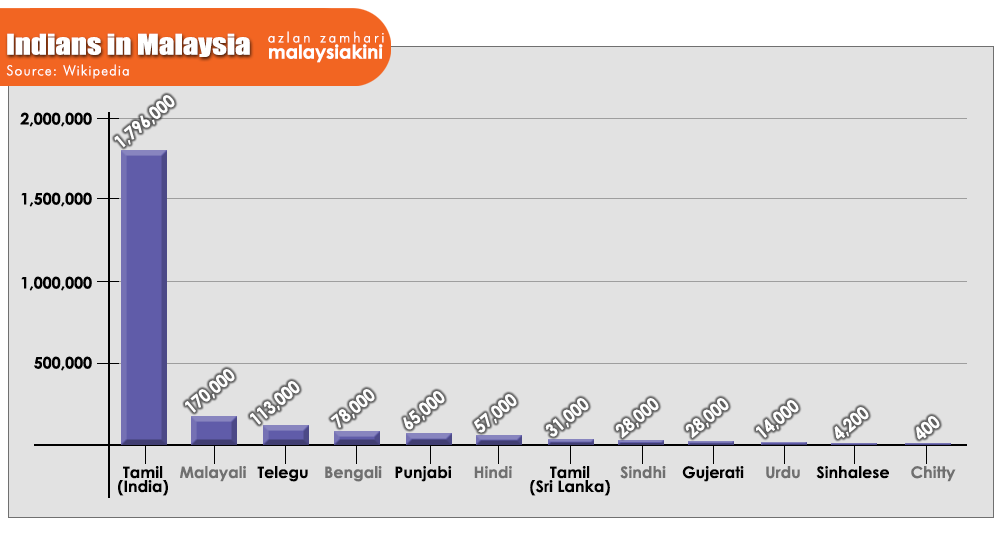“Prejudice is a burden that confuses the past, threatens the future and renders the present inaccessible.”
- Maya Angelou
QUESTION TIME | Perhaps the title should have been just “Apa India mahu?” because the word “lagi” implies that you have too much. The fact is that Indians in the country have too little of everything except for their relative shares in such things as the extent of gangsterism, number of people in jails, number of people killed in custody, unemployment and so on.
Although the per capita income of Indians in Malaysia is higher than that of the bumiputeras (includes Malays and others), they are the most disadvantaged group in the country as shown by other social indicators. In fact, even in terms of per capita income, Indians, who are now largely in the urban areas as opposed to bumiputeras in the rural areas, face higher living expenses. If this is adjusted for, they might become the most disadvantaged even in terms of income.
But who are the Indians?

Indians form about two million people accounting for some seven percent of the population in Malaysia with Malays about 50 percent, Chinese about 25 percent and other bumiputeras about 11 percent. But they are not a uniform community - many subgroups being far better off than the average in terms of income and social well-being.
Tamils from India (see table) form by far the vast majority, accounting for some 75 percent of those considered Indians and this is the group which has been the most disadvantaged largely because of historical and social reasons. They were exploited successively by the British, the Malayan and the Malaysian governments who gave and are giving scant attention to their predicament. This is the group that we are referring to here when we talk about disadvantaged Indians.
While Indians have a long presence in Malaysia, dating back over 2,000 years ago, most of them were brought in to work as indentured labour - a form of bonded labour which replaced slavery after it was abolished in the late 19th century. Bonded labour involved working to pay off a debt which is often not clearly specified with workers paid extremely low wages for very hard work.
Most of them worked in the rubber plantations and in labour intensive tasks such as building roads and railways. In fact, it would be true to say that in the years of British occupation and the early years of Malaysia’s independence, the Indians built not only the roads and railways, making Malaysian infrastructure among the best in developing countries, but made rubber the main export earner.
But their efforts were not rewarded despite them being organised in the plantation sector in 1954 under the National Union of Plantation Workers or NUPW, at one point one of the largest unions in the world. While their union leaders were chauffeured around in Mercedes Benzes and they did manage to bring some benefits to members, plantation workers remained mired in extreme poverty.
Eventually, the Indians, the majority of whom were then in estates, were dealt a severe blow when in the 80s, the government encouraged cheap illicit labour in the hundreds of thousands into plantations and other industries, halting any chance of higher income there.
A former finance minister and plantation owner, Tan Siew Sin, even said then that if illegal labour was removed from plantations, they would collapse. The NUPW, the MIC and the government stood by and watched this happen - a move that further impoverished an already impoverished community.
In fact, some in the government and in politics may even have clapped their hands perversely to watch this perceived Indian dominance of the plantation industry albeit at the labour level whittled away through the import of cheap, exploited Indonesian labour.
From the green ghettos, the Indians moved into towns and cities to earn a living, creating slums. Unemployment among them increased, they lived in squalor, they took whatever work they could get and as with any disadvantaged minority they took to crime as a means of living. They resorted to gangs for social inclusion and self-respect...

